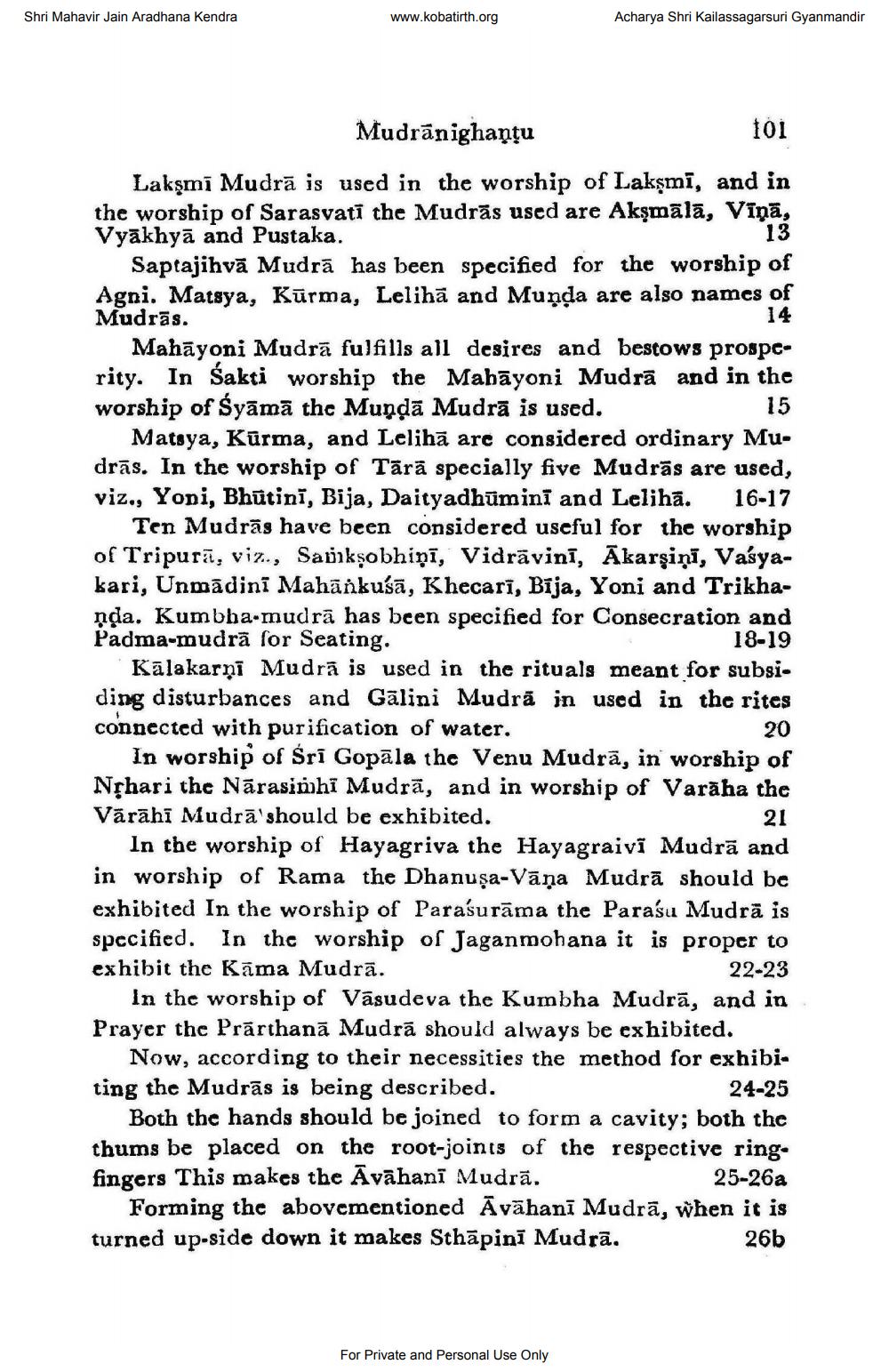________________
Shri Mahavir Jain Aradhana Kendra
www.kobatirth.org
Acharya Shri Kailassagarsuri Gyanmandir
Mudrānighangu
toi Lakşmī Mudrā is used in the worship of Lakşmī, and in the worship of Sarasvati che Mudrās used are Akşmālā, Vīņā, Vyākhyā and Pustaka.
13 Saptajihvā Mudrā has been specified for the worship of Agni. Matsya, Kūrma, Lelihā and Munda are also names of Mudrās.
Mahāyoni Mudrā fulfills all desires and bestows prosperity. In Sakti worship the Mahāyoni Mudrā and in the worship of śyāmā the Muņdā Mudrā is used.
15 Matsya, Kūrma, and Lelihā are considered ordinary Mudrās. In the worship of Tārā specially five Mudrās are used, viz., Yoni, Bhūtini, Bija, Daityadhūminī and Lelihā. 16-17
Ten Mudrās have been considered useful for the worship of Tripurā, viz., Saviksobhiņi, Vidrāvinī, Ākarşiņi, Vaśyakari, Unmādinī Mahānkušā, Khecarī, Bīja, Yoni and Trikhanda. Kumbha-mudrā has been specified for Consecration and Padma-mudrā for Seating.
18-19 Kālakarņi Mudrā is used in the rituals meant for subsi. ding disturbances and Gālini Mudră in used in the rites connected with purification of water.
20 In worship of Śrī Gopāla the Venu Mudrā, in worship of NȚhari the Nārasimhi Mudrā, and in worship of Varāha the Vārāhī Mudrā should be exhibited.
21 In the worship of Hayagriva the Hayagraivi Mudrā and in worship of Rama the Dhanusa-Vāņa Mudrā should be exhibited in the worship of Paraśurāma the Parasu Mudrā is spccified. In the worship of Jaganmohana it is proper to exhibit the Kāma Mudrā.
22-23 In the worship of Vasudeva the Kumbha Mudrā, and in Prayer the Prārthanā Mudrā should always be exhibited.
Now, according to their necessities the method for exhibiting the Mudrās is being described.
24-25 Both the hands should be joined to form a cavity; both the thums be placed on the root-joints of the respective ring. fingers This makes the Āvāhanī Mudrā.
25-26a Forming the abovementioned Āvāhanī Mudrā, when it is turned up-side down it makes Sthāpinī Mudrā.
26b
For Private and Personal Use Only




